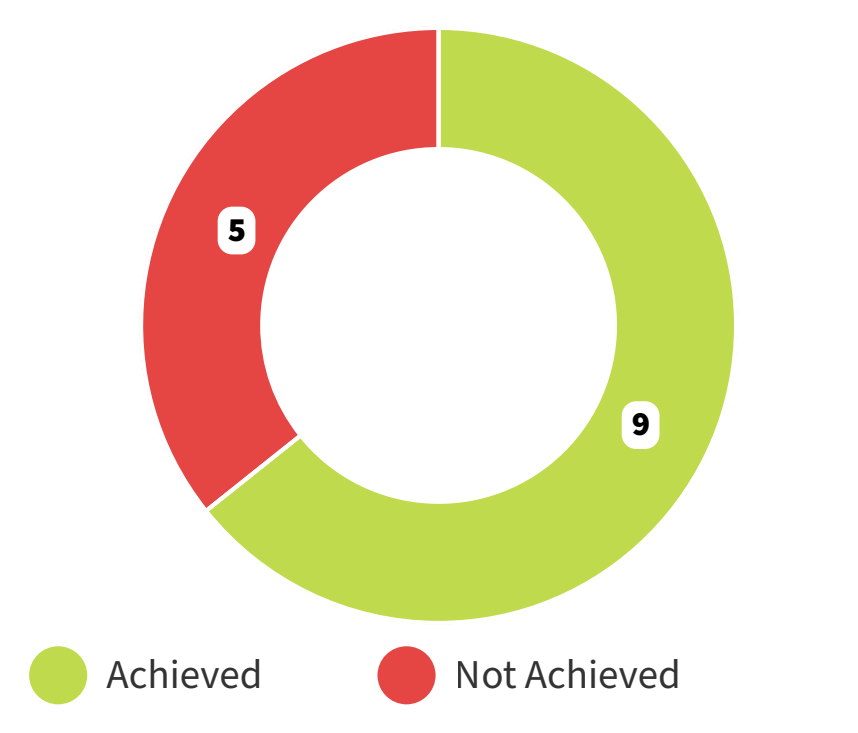Ko te mahere ā-rohe me ngā rangapū Regional Strategy and Partnerships
Greater Wellington’s Regional Strategy and Partnership activities achieved 64 percent of their 14 performance measures this year. Of the 5 measures not achieved, 1 measure came within 2 percent of the target.
 What we deliver for regional partnerships
What we deliver for regional partnerships
We develop strategy, work in partnership with mana whenua and territorial authorities and coordinate across climate change, business resilience and emergency management, democratic services, spatial planning, regional transport planning, and regional economic development. Our partnerships with mana whenua and engagement with mātāwaka Māori are critical when we are considering how to respond and deliver meaningfully across our Region.
Improved emergency preparedness and resilience awareness
Two large-scale Emergency Coordination Centre (ECC) exercises were run to test our readiness to respond to a real emergency event in the region. The designated space within Greater Wellington’s Cuba Street Office was shown to be an effective primary location for the ECC to operate. This year, 198 staff completed formal civil defence and emergency management training, ensuring we are ready to respond when an emergency event occurs across the region.
The Geospatial Resilience Information Tool (GRIT) has been developed as part of the Wellington Regional Leadership Committee’s (WRLC) Regional Adaptation Project. GRIT provides a hub for consistent and comprehensive resilience data for the Wellington Region.
Improved representation and transparency in the democratic process
On 27 August 2024, the Council affirmed its resolution to establish a Māori Constituency for the 2025 and 2028 triennial local elections following a recommendation from Te Tiriti o Waitangi Komiti. As a result of this affirmation a mandatory Māori constituency poll will be held at the time of the 2025 elections, with the poll outcome applying for the 2028 and 2031 triennial local elections. The mandatory poll on Māori Constituency forces Greater Wellington to revisit a matter already passed by Council, giving rise to an estimated $350,000 (excl. GST) cost to implement a public poll.
The 27 August 2024 also marked the first livestreaming and recording of a Council meeting. All Council and Committee meetings held in the Council Chamber are now publicly livestreamed and recorded for future access. This initiative has provided greater community access to the Council’s discussions and decision-making, and therefore greater transparency of our democratic processes.
Climate emergency response programme
In the first three months of 2024/25 financial year the Council have adopted the two updated Climate Emergency Action Plans (the Organisational and Regional ‘10-Point Plans’), which reflect the actions committed to through the adoption of the 2024-34 Long Term Plan. These reflect Council’s pro-active steps to continue with reducing its GHG emissions, as well as focussing more attention on specific climate adaptation actions.
This year we also completed a project to investigate options for reducing GHG emissions from grazing on flood protection lands managed by Greater Wellington, which was funded by Central Government Better Off Funding. A report was published which outlined several recommended actions which, if taken, would reduce Greater Wellington’s GHG emissions, as well as provide potential co-benefits for things such as biodiversity, water quality, climate change adaptation and carbon sequestration.